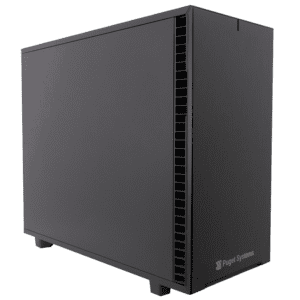It’s time for a “Docker with NVIDIA GPU support” update. This post will guide you through a useful Workstation setup (including User-name-spaces and performance tuning) with the new versions of Docker and the NVIDIA GPU container toolkit.
NVIDIA Docker2 with OpenGL and X Display Output
Docker is a great Workstation tool. It is mostly used for command-line application or servers but, … What if you want to run an application in a container, AND, use an X Window GUI with it? What if you are doing development work with CUDA and are including OpenGL graphic visualization along with it? You CAN do that!
How To Install Docker and NVIDIA-Docker on Ubuntu 19.04
Being able to get Docker and the NVIDIA-Docker runtime working on Ubuntu 19.04 makes this new and (currently) mostly unsupported Linux distribution a lot more useful. In this post I’ll go through the steps that I used to get everything working nicely.
Docker and NVIDIA-docker on your workstation: Integration with your Desktop
I’ve been doing this series of posts about setting up Docker for your desktop system, so why not literally add containers to your desktop! The way we have Docker configured, containers are the same as other applications you run. In this post I’ll show you how to add icons and menu items to launch containers.
Docker and Nvidia-Docker on your workstation: Common Docker Commands Tutorial
Docker can be complex but for use on single-user-workstation you can get a lot done with just a few commands. This post will go through some commands to manage your images and containers. We will also go through the process of building a docker image for CUDA development that includes OpenGl support.
Docker and NVIDIA-docker on your workstation: Using Graphical Applications
You can use graphical application with Docker and NVIDIA-Docker by attaching your X-Window server socket to a container. And, it can be done in a relatively safe and secure way. I will take advantage of the Docker security and usability enhancements from the configuration with User-Namespaces that we setup in the previous post and show you how to run a CUDA application with OpenGL output support.
Docker and NVIDIA-docker on your workstation: Setup User Namespaces
In this third post on Docker and Nvidia-Docker we will configure “kernel user namespaces” for use with Docker. This will increase the security and usability of Docker on your desktop. This is a relatively new feature in Docker and is a key component for the viability of “Docker on your workstation”.
Docker and NVIDIA-docker on your workstation: Installation
In this second post on Docker and Nvidia-Docker we will do an install and setup on an Ubuntu 16.04 workstation.
Docker and NVIDIA-docker on your workstation: Motivation
Docker containers together with the NVIDIA-docker can provide relief from dependency and configuration difficulties when setting up GPU accelerated machine learning environments on a workstation. In this post I will discuss motivation for considering this.
